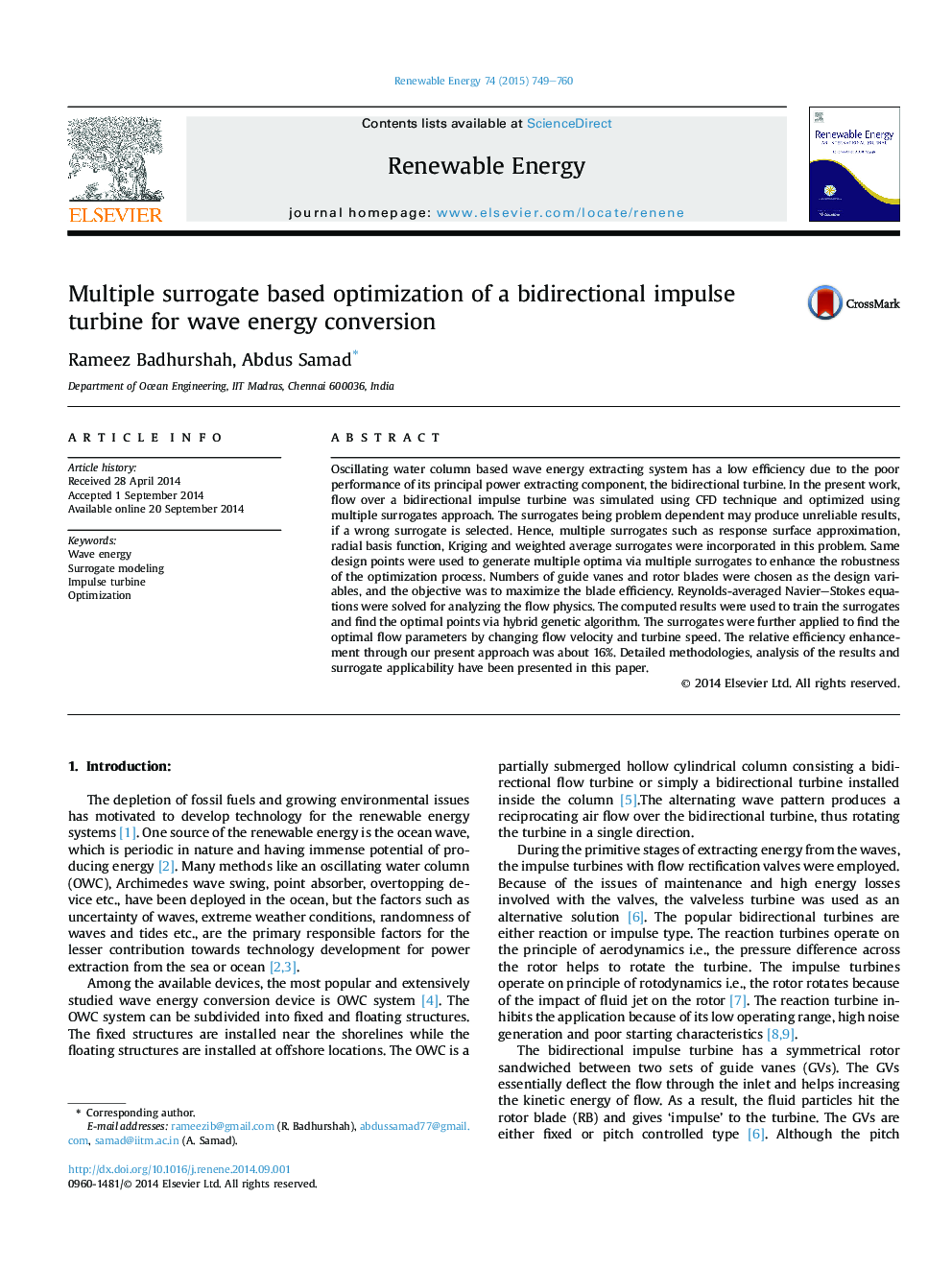| Article ID | Journal | Published Year | Pages | File Type |
|---|---|---|---|---|
| 300028 | Renewable Energy | 2015 | 12 Pages |
•Relative efficiency enhancement of bidirectional impulse turbine up to 16% by changing number of rotor blade and guide vane.•Finding optimal operating zone of turbine operation so that maximum energy can be harvested.•Focus on selection of surrogate strategy and the surrogate effectiveness is also reported.
Oscillating water column based wave energy extracting system has a low efficiency due to the poor performance of its principal power extracting component, the bidirectional turbine. In the present work, flow over a bidirectional impulse turbine was simulated using CFD technique and optimized using multiple surrogates approach. The surrogates being problem dependent may produce unreliable results, if a wrong surrogate is selected. Hence, multiple surrogates such as response surface approximation, radial basis function, Kriging and weighted average surrogates were incorporated in this problem. Same design points were used to generate multiple optima via multiple surrogates to enhance the robustness of the optimization process. Numbers of guide vanes and rotor blades were chosen as the design variables, and the objective was to maximize the blade efficiency. Reynolds-averaged Navier–Stokes equations were solved for analyzing the flow physics. The computed results were used to train the surrogates and find the optimal points via hybrid genetic algorithm. The surrogates were further applied to find the optimal flow parameters by changing flow velocity and turbine speed. The relative efficiency enhancement through our present approach was about 16%. Detailed methodologies, analysis of the results and surrogate applicability have been presented in this paper.
